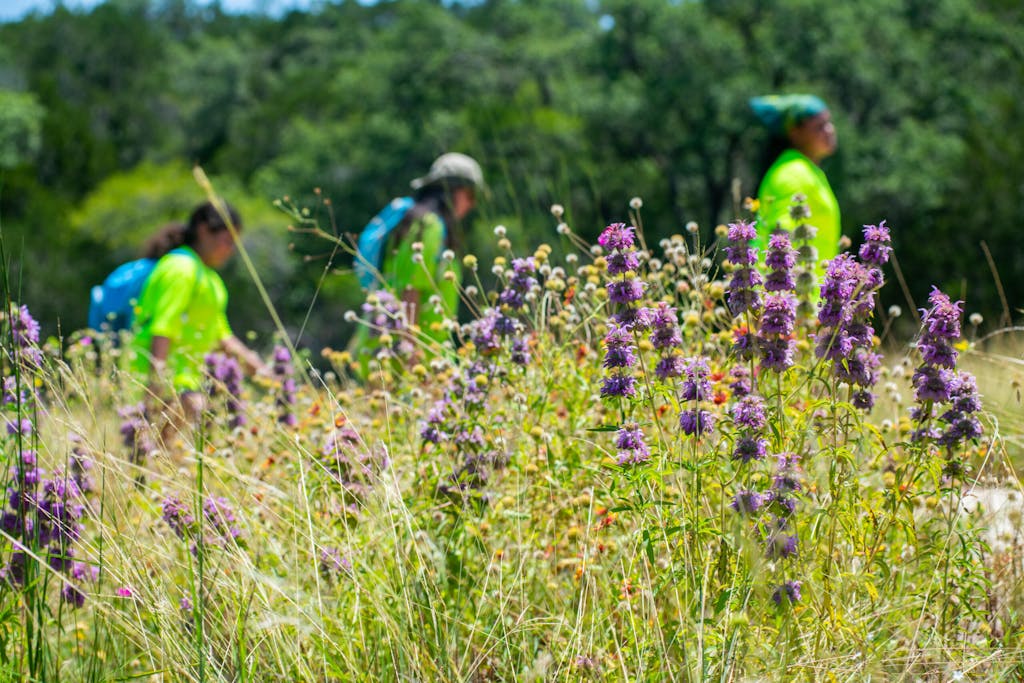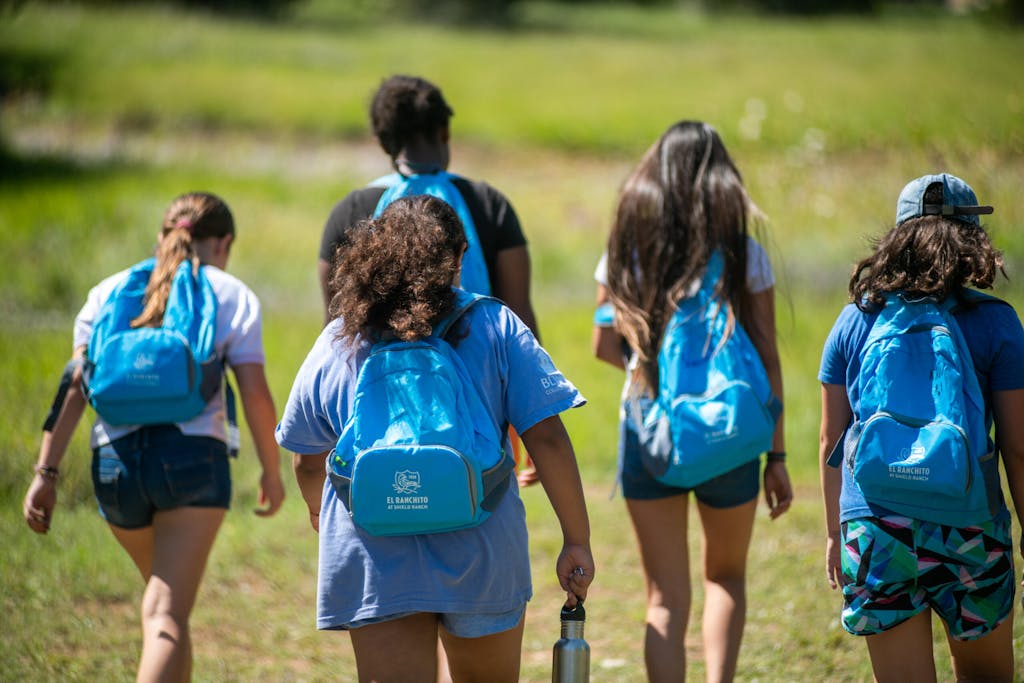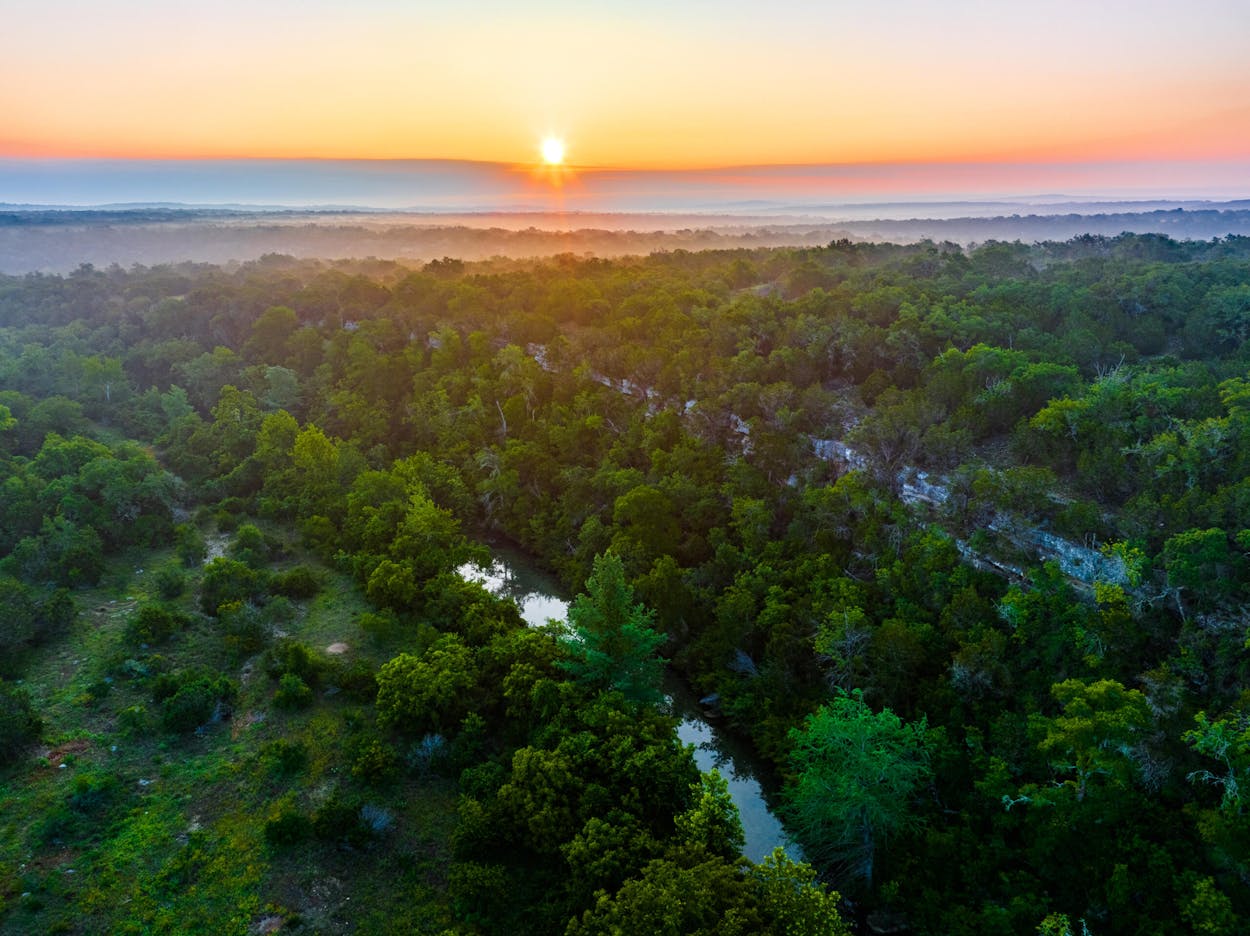Vera Ayres Bowen and her brother, Bob Ayres, grew up spending long, languid days exploring the sprawling Hill Country ranch west of Austin that her grandparents purchased in 1938.
Every time they made the trip from San Antonio to the Shield Ranch, Bowen and her family stopped first to share a meal with a couple that lived on the property and helped work the land. Then she’d cut loose, spending days roaming free. She picked peaches and pears from trees planted by her grandparents. She hiked through clusters of Ashe juniper and oak, discovered armadillos and snakes, and rode a horse, by herself, through the wild and undeveloped landscape. One memorable day, she leapt off a shed-sized boulder in Barton Creek into the family swimming hole.
Those trips, she says, left an indelible mark on her childhood. “That gave me a sense of independence. I think being in nature built my confidence,” Bowen says. “It was pure joy, pure bliss — the same as it still is.”
Those experiences ultimately inspired the Ayres family to protect their 6,400-acre ranch for future generations through the use of conservation easements.

Shield Ranch is a special place. Ringed in hills and teaming with wildlife, it’s a designated “Quiet Place” by Quiet Parks International. Endangered golden-cheeked warblers nest on the property, where the old ranch house still stands along with the circa 1873 Haas Log Cabin. White-tailed deer bound through fields; porcupines climb trees. Six miles of Barton Creek wind through the property, which is designated a historic district in the National Register.
“It became evident to us that the city of Austin was going to quickly meet the fence line,” Bowen says. “We did biological inventories, botany studies, and bird counts. The deeper we came to understand this land, the more compelled we were to preserve it.”
After the family developed its first ranch masterplan in the 1980s, they reached out to The Nature Conservancy in Texas to learn more about how they could protect and conserve the land.
“They were ‘thought partners’ with us over the next 10 years,” Bowen says.
In the late 1990s, the Ayres family — Vera, Bob, and their mother Patricia Shield Ayres — donated an “easement,” an agreement that restricts some uses of the land, on 4,670 acres of their ranch to The Nature Conservancy. Then, the Ayres sold an easement on an additional 1,676 acres to the City of Austin as part of its first voter-approved water protection program.
The family also owns ranches in Real County and the Davis Mountains, both of which are also managed for conservation.

“I think of my family as being a lot like this land — diverse,” Bowen says of their decision to protect the ranch. “But this ranch is one place we come to agreement. We really wanted to preserve what we’d come to know as a special mosaic of land.”
Today, Bowen, along with her mother, Pat Shield Ayres, and her brother Bob, still own and maintain the ranch, and 131 acres are owned by the Shield Ranch Foundation. The easements prevent major development in the future. (Some minimal development is allowed, including family homes and the new Campsite at Shield Ranch, which hosts Camp El Ranchito, retreats, and outdoor programming.)

“It’s a very important property from a conservation standpoint,” says Jeff Francell, director of land preservation for The Nature Conservancy in Texas. He worked with the family on the agreement.
“I refer to (the Shield Ranch) as the lungs of Barton Creek — more than six thousand acres and six miles on both sides of Barton Creek.… If (the Ayres) were a different kind of family, we’d be talking about a humongous master-planned community, which would have a real negative effect on water quality. The fact that it’s going to remain relatively undeveloped forever does a great job of preserving water quality on Barton Creek.”
Under the easement’s guidelines, officials from The Nature Conservancy visit the property at least once a year to make sure the landowners are living up to the terms of the agreement. They also help troubleshoot any problems on the property. “They’ve been great partners,” Bowen says.
Francell describes the Ayres as leaders in conservation in Texas. “They were one of the first significant family ranches to donate a conservation easement, and they’ve been very supportive of land trusts and conservation initiatives in Texas,” he says.

The easements allow the family to operate a youth camp on a 131-acre portion of the ranch held by the non-profit Shield Ranch Foundation. The camp started 17 years ago, and last summer moved into permanent structures in the southwestern corner of the ranch.

Walk down a twisty, mulch-covered trail and you’ll reach The Campsite, a cluster of small, off-the-grid cabins where youth come to learn more about nature. A stone monument honors those who lived on the land long ago — the Indigenous people, the European settlers, and then the ranchers.
“We’re mindful of the continual care of this land over time,” Bowen says.
The off-the-grid, solar-operated facilities include a covered pavilion, evaporative toilets, rainwater collection tanks, a dining hall and kitchen, and 11 sleeping shelters with walls that slide open to let in the breeze. The foundation works with organizations like El Buen Samaritano and Westcave Outdoor Discovery Center to recruit fourth through twelfth graders who might not otherwise get the opportunity to go to camp. Giving those kids a place to return to year after year is important, Bowen says.
“That’s what the ranch has been to us,” she says, noting that her mother grew up spending time on the ranch, as did her own four children and her brother’s two kids. “My personal hope is (the campers) will feel a kinship with the earth and feel comfortable in nature.”
Thanks to the easements, Bowen hopes that 50 or 100 years from now the ranch will look very much like it does today.

“Our relationship with the land is one primarily based on stewardship. Keeping in mind that many have come before us and more will come after us, we saw our work as how to best care for this land when it was our time to do so,” she says. “Conservation easements were a great tool for us to steward this land we love.”







